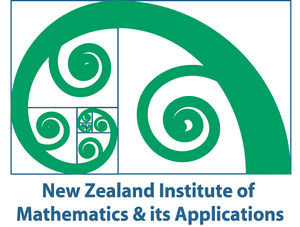Difference between revisions of "Main Page"
| (125 intermediate revisions by 11 users not shown) | |||
| Line 1: | Line 1: | ||
| − | = Water | + | __NOTOC__ |
| + | {| id="mp-topbanner" style="width:100%; background:#fcfcfc; margin-top:1.2em; border:1px solid #ccc;" | ||
| + | | style="width:56%; color:#000;" | | ||
| + | {| style="width:280px; border:none; background:none;" | ||
| + | | style="width:280px; text-align:center; white-space:nowrap; color:#000;" | | ||
| + | <div style="font-size:162%; border:none; margin:0; padding:.1em; color:#000;">Welcome to '''Wikiwaves''',</div> | ||
| + | <div style="top:+0.2em; font-size:95%;">the water waves wiki.</div> | ||
| + | <div id="articlecount" style="width:100%; text-align:center; font-size:85%;">[[Special:Statistics|{{NUMBEROFARTICLES}}]] articles</div> | ||
| + | |} | ||
| + | | style="width:17%; font-size:95%;" | | ||
| + | * [[:Category:Simple Linear Waves|Simple waves]] | ||
| + | * [[:Category:Linear Water-Wave Theory|Linear water waves]] | ||
| + | * [[:Category:Nonlinear Water-Wave Theory|Nonlinear water waves]] | ||
| + | | style="width:23%; font-size:95%;" | | ||
| + | * [[:Category:Geophysics|Geophysics]] | ||
| + | * [[:Category:Offshore Engineering|Offshore engineering]] | ||
| + | * [[:Category:Ocean Wave Interaction with Ships and Offshore Structures|Wave and wave body interactions]] | ||
| + | |} | ||
| + | {| id="mp-strapline" style="width:100%; background:none; margin:-.8em 0 -.7em 0;" | ||
| + | | style="font-size:95%; padding:10px 0; margin:0; text-align:left; white-space:nowrap; color:#000;" |[[FAQ]] | ||
| + | | style="font-size:95%; padding:10px 0; margin:0; text-align:right; white-space:nowrap; color:#000;" | | ||
| + | [[:Category:Reference|References]] '''·''' [[Standard Notation|Standard notation]] '''·''' [[test | Test page]] | ||
| + | |} | ||
| − | + | {| id="mp-upper" style="margin:0 0 0 0; background:none;" | |
| − | + | | class="MainPageBG" style="width:55%; border:1px solid #cef2e0; background:#f5fffa; vertical-align:top; color:#000;" | | |
| − | + | {| id="mp-left" cellpadding="2" cellspacing="5" style="width:100%; vertical-align:top; background:#f5fffa;" | |
| + | ! <h2 id="mp-i-h2" style="margin:0; background:#cef2e0; font-size:120%; font-weight:bold; border:1px solid #a3bfb1; text-align:left; color:#000; padding:0.2em 0.4em;">Introduction</h2> | ||
| + | |- | ||
| + | | style="color:#000;" | | ||
| + | <div> | ||
| + | Water waves are beautiful and their mathematics is fascinating, deep, and full of amazing results. Their understanding is also of great practical importance for the design of marine structures. | ||
| − | + | This wiki is devoted to the mathematics of water waves and to providing an online reference to explain all aspects of their theory. The wiki is a work in progress and strongly reflects the research interests of [[Michael Meylan]] who is doing most of work! However, you are strongly encouraged to contribute in any way you see fit (see [[Why you should contribute]]). | |
| − | |||
| − | |||
| − | |||
| − | + | For a brief course in wave-body interactions begin with [[:Category:Ocean Wave Interaction with Ships and Offshore Structures|Wave and Wave Body Interactions]]. | |
| − | + | </div> | |
| − | in | + | |} |
| − | We | + | | style="border:1px solid transparent;" | |
| + | | class="MainPageBG" style="width:45%; border:1px solid #cedff2; background:#f5faff; vertical-align:top;" | | ||
| + | {| id="mp-right" cellpadding="2" cellspacing="5" style="width:100%; vertical-align:top; background:#f5faff;" | ||
| + | ! <h2 id="mp-fp-h2" style="margin:0; background:#cedff2; font-size:120%; font-weight:bold; border:1px solid #a3b0bf; text-align:left; color:#000; padding:0.2em 0.4em;">Featured pages</h2> | ||
| + | |- | ||
| + | | style="color:#000;" | | ||
| + | <div> | ||
| + | *[[:Category:Eigenfunction Matching Method|Eigenfunction Matching Method]]: The eigenfunction matching method. | ||
| + | *[[:Category:Wave Scattering in the Marginal Ice Zone|Wave Scattering in the Marginal Ice Zone]]: A description of the geophysical problem in water wave scattering. | ||
| + | *[[:Category:Interaction Theory|Interaction Theory]]: Presents the theory of multiple body interactions. | ||
| + | </div> | ||
| + | |- | ||
| + | ! <h2 id="mp-s-h2" style="margin:0; background:#cedff2; font-size:120%; font-weight:bold; border:1px solid #a3b0bf; text-align:left; color:#000; padding:0.2em 0.4em;">Wikiwaves announcements</h2> | ||
| + | |- | ||
| + | | style="color:#000;" | | ||
| + | <div> | ||
| + | * At the moment we are trying to link this wiki to computer code. | ||
| + | * We appreciate all and every edit - even fixing a typing mistake. | ||
| + | </div> | ||
| + | |} | ||
| + | |} | ||
| − | + | ===About Us=== | |
| − | + | [[Image:NZIMA.jpg|thumb|right]] | |
| − | |||
| − | |||
| − | |||
| − | + | This website is organised by [[Michael Meylan]] and [[WikiWaves:Administrators|others]]. It was initially supported by a grant from the | |
| − | + | [http://www.nzima.auckland.ac.nz/ New Zealand Institute of Mathematics]. | |
| − | + | A significant amount of the initial content was derived from the [http://ocw.mit.edu/index.html MIT opencourseware]. | |
| − | |||
| − | This website | ||
| − | |||
| − | |||
| − | |||
| − | |||
| − | |||
| − | |||
| − | |||
| − | |||
| − | |||
| − | |||
| − | |||
| − | |||
| − | |||
| − | |||
Latest revision as of 03:27, 29 October 2012
|
| FAQ |
|
|
About Us
This website is organised by Michael Meylan and others. It was initially supported by a grant from the New Zealand Institute of Mathematics. A significant amount of the initial content was derived from the MIT opencourseware.
